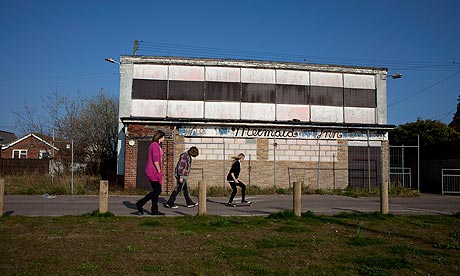Geographical variation in voluntary sector activity is important if it leads to inequity in service provision, or differences in the opportunity to participate in voluntary activities. Commentators such as Lester Salamon have argued that lack of financial resources is particularly evident in disadvantaged areas since 'the resources are frequently not available where the problems are most severe'.
Evidence from the National Survey of Third Sector Organisations supports this. We used data from the 2008 survey to identify those organisations that indicated that they work at the neighbourhood level. We estimated the prevalence (the ratio per 1000 population) of these local organisations in different kinds of areas across England, according to the level of area deprivation.
There are substantial contrasts between areas. The less deprived parts of the country have a much higher prevalence of local voluntary organisations than the more deprived areas. Second, in the less deprived areas, there were many more organisations that did not receive any money from central or local government than those that did; in the most deprived areas, this pattern was reversed.
Plans to give new powers and rights to neighbourhood groups in the UK should be understood within this context. Differences in the prevalence of local voluntary organisations in different kinds of areas, combined with well-known variations in volunteering rates, suggest that some communities will be much better equipped than others to take on these new powers. In addition, many voluntary organisations are faced with cuts in their funding. Since deprived areas have a higher share of organisations in receipt of public funds, this may mean that areas where the sector is less strong are also those most exposed to funding cuts.
However, our survey dataset only provides information on those voluntary sector organisations that appear on national registers like those at the Charity Commission and Companies House. It largely excludes places of worship, which are often a hub for community activity, and it doesn't include unregistered organisations. Other work suggests that there are probably more such groups in disadvantaged areas, which redresses the imbalance somewhat, although there are real difficulties in obtaining reliable and consistent evidence about "below-radar" groups.
Nevertheless, the patterns do illustrate the very real geographical differences across the country in the prevalence of registered organisations working locally. We have explored this question further by investigating the differences in charitable resources – not just the organisations registered, but also those known to be operating there - between two contrasting neighbourhoods that lie within 3 miles of each other in the same local government district in south east England. One neighbourhood, defined as one of the 20% most deprived areas in the country, is dominated by social renting and high levels of reliance on state benefits. The other, defined as one of the 20% least deprived in the country, is a prosperous village with high levels of owner occupation and high proportions of retired people.
About three times as many charities provide benefit to the more affluent case-study area compared with the very deprived one. Charities operating in the more affluent area are a vibrant mix of small, volunteer-run, home-grown charities that meet a wide range of community, social and cultural needs. The majority are funded through local donations, fund-raising events, and legacies, and tend to be run by retired people.
In contrast, a third of the charities operating in the deprived area are small, volunteer-run, home-grown charities which address small-scale, social and community needs. These mostly date from the 1960s and 1970s; more recently set-up charities have proved to be less sustainable.
The remainder are well-established, larger charities, run by professionals from outside of the community, and predominantly reliant on statutory funding. The majority meet urgent social needs. These are essentially paternalistic charities.
Our respondents describe their experiences of 'predatory' charities and agencies identifying opportunities in 'deprivation funding'. They expressed concerns that the short-term nature of funding initiatives, and an associated lack of effective exit strategies and legacy, had left the deprived community with a distrust of new projects that are 'helicoptered into the area'.
More successful has been an agency and charity-driven vision of 'aspiration and excellence' for the area, which is embodied in an arts charity initially set up with Single Regeneration Budget (SRB) funding. In an area that focuses on what it needs to have, rather than what it would be nice to have, this charity represents an anomaly that enables community access to cultural enrichment which, in contrast, is readily available in the affluent area.
The key aspiration of many residents is to leave the area, resulting in the regular loss of the more successful and more able out of the community. In contrast the more affluent case-study community has a wealth of people with project-management skills, time, funds and confidence. These differences represent a substantial challenge if there is an expectation from central and local government that volunteers should shoulder the burden of public expenditure cuts in this area. Combined, our quantitative and qualitative evidence highlights what Salamon termed "philanthropic insufficiency" – the inability of voluntary effort alone to provide services on a universal basis and to reach communities in greatest need.
Rose Lindsey and David Clifford work at the University of Southampton: Rose with the Centre for Charitable Giving and Philanthropy; David with the Third Sector Research Centre. They would like to thank John Mohan, who oversees their research.
This content is brought to you by Guardian Professional. To join the voluntary sector network, click here.









